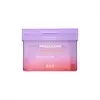What's inside
What's inside
 Key Ingredients
Key Ingredients

 Benefits
Benefits

 Concerns
Concerns

 Ingredients Side-by-side
Ingredients Side-by-side

Water
Skin ConditioningPropylene Glycol
HumectantNiacinamide
SmoothingGlycerin
HumectantPolysorbate 20
EmulsifyingPhenoxyethanol
PreservativePEG-40 Hydrogenated Castor Oil
EmulsifyingPolyglyceryl-2 Stearate
EmulsifyingCaprylic/Capric Triglyceride
MaskingGlyceryl Stearate
EmollientStearyl Alcohol
EmollientCamellia Sinensis Leaf Extract
AntimicrobialMethyl Methacrylate Crosspolymer
Polyglutamic Acid
Skin ConditioningTetrasodium EDTA
Retinol
Skin ConditioningHydrogenated Lecithin
EmulsifyingEthylhexylglycerin
Skin ConditioningCholesterol
EmollientXanthan Gum
EmulsifyingTocopheryl Acetate
AntioxidantRubus Idaeus Fruit Extract
AstringentBHT
AntioxidantPunica Granatum Fruit Extract
AntioxidantButylene Glycol
HumectantPhaseolus Radiatus Seed Extract
Skin ConditioningBHA
AntioxidantAvena Sativa Meal Extract
SoothingPalmitoyl Hexapeptide-12
Skin ConditioningWater, Propylene Glycol, Niacinamide, Glycerin, Polysorbate 20, Phenoxyethanol, PEG-40 Hydrogenated Castor Oil, Polyglyceryl-2 Stearate, Caprylic/Capric Triglyceride, Glyceryl Stearate, Stearyl Alcohol, Camellia Sinensis Leaf Extract, Methyl Methacrylate Crosspolymer, Polyglutamic Acid, Tetrasodium EDTA, Retinol, Hydrogenated Lecithin, Ethylhexylglycerin, Cholesterol, Xanthan Gum, Tocopheryl Acetate, Rubus Idaeus Fruit Extract, BHT, Punica Granatum Fruit Extract, Butylene Glycol, Phaseolus Radiatus Seed Extract, BHA, Avena Sativa Meal Extract, Palmitoyl Hexapeptide-12
Water
Skin ConditioningButylene Glycol
HumectantNiacinamide
Smoothing1,2-Hexanediol
Skin ConditioningCollagen Extract
Skin ConditioningDiethoxyethyl Succinate
SolventHydroxyethyl Urea
HumectantPolyglyceryl-10 Laurate
Skin ConditioningXanthan Gum
EmulsifyingGlyceryl Caprylate
EmollientEthylhexylglycerin
Skin ConditioningAdenosine
Skin ConditioningSodium Phytate
Panthenol
Skin ConditioningCitric Acid
BufferingCapryloyl Salicylic Acid
ExfoliatingCamellia Japonica Flower Extract
EmollientTocopherol
AntioxidantLactobacillus Ferment Lysate
Skin ConditioningSoluble Collagen
HumectantAcetyl Hexapeptide-8
HumectantPalmitoyl Pentapeptide-4
Skin ConditioningAcetyl Tetrapeptide-3
Skin ProtectingPalmitoyl Tetrapeptide-7
Skin ConditioningDipeptide-2
Skin ConditioningCopper Tripeptide-1
Skin ConditioningPalmitoyl Tripeptide-1
Skin ConditioningAcetyl Tetrapeptide-5
HumectantNonapeptide-1
Skin ConditioningPentapeptide-3
Skin ConditioningDipeptide Diaminobutyroyl Benzylamide Diacetate
Skin ConditioningPalmitoyl Tripeptide-5
Skin ConditioningPalmitoyl Hexapeptide-12
Skin ConditioningTripeptide-1
Skin ConditioningHexapeptide-9
Skin ConditioningHexapeptide-11
Skin ConditioningOligopeptide-1
Skin ConditioningArginine/Lysine Polypeptide
Skin ConditioningWater, Butylene Glycol, Niacinamide, 1,2-Hexanediol, Collagen Extract, Diethoxyethyl Succinate, Hydroxyethyl Urea, Polyglyceryl-10 Laurate, Xanthan Gum, Glyceryl Caprylate, Ethylhexylglycerin, Adenosine, Sodium Phytate, Panthenol, Citric Acid, Capryloyl Salicylic Acid, Camellia Japonica Flower Extract, Tocopherol, Lactobacillus Ferment Lysate, Soluble Collagen, Acetyl Hexapeptide-8, Palmitoyl Pentapeptide-4, Acetyl Tetrapeptide-3, Palmitoyl Tetrapeptide-7, Dipeptide-2, Copper Tripeptide-1, Palmitoyl Tripeptide-1, Acetyl Tetrapeptide-5, Nonapeptide-1, Pentapeptide-3, Dipeptide Diaminobutyroyl Benzylamide Diacetate, Palmitoyl Tripeptide-5, Palmitoyl Hexapeptide-12, Tripeptide-1, Hexapeptide-9, Hexapeptide-11, Oligopeptide-1, Arginine/Lysine Polypeptide
Ingredients Explained
These ingredients are found in both products.
Ingredients higher up in an ingredient list are typically present in a larger amount.
Butylene Glycol (or BG) is used within cosmetic products for a few different reasons:
Overall, Butylene Glycol is a safe and well-rounded ingredient that works well with other ingredients.
Though this ingredient works well with most skin types, some people with sensitive skin may experience a reaction such as allergic rashes, closed comedones, or itchiness.
Learn more about Butylene GlycolEthylhexylglycerin (we can't pronounce this either) is commonly used as a preservative and skin softener. It is derived from glyceryl.
You might see Ethylhexylglycerin often paired with other preservatives such as phenoxyethanol. Ethylhexylglycerin has been found to increase the effectiveness of these other preservatives.
Niacinamide is a multitasking form of vitamin B3 that strengthens the skin barrier, reduces pores and dark spots, regulates oil, and improves signs of aging.
And the best part? It's gentle and well-tolerated by most skin types, including sensitive and reactive skin.
You might have heard of "niacin flush", or the reddening of skin that causes itchiness. Niacinamide has not been found to cause this.
In very rare cases, some individuals may not be able to tolerate niacinamide at all or experience an allergic reaction to it.
If you are experiencing flaking, irritation, and dryness with this ingredient, be sure to double check all your products as this ingredient can be found in all categories of skincare.
When incorporating niacinamide into your routine, look out for concentration amounts. Typically, 5% niacinamide provides benefits such as fading dark spots. However, if you have sensitive skin, it is better to begin with a smaller concentration.
When you apply niacinamide to your skin, your body converts it into nicotinamide adenine dinucleotide (NAD). NAD is an essential coenzyme that is already found in your cells as "fuel" and powers countless biological processes.
In your skin, NAD helps repair cell damage, produce new healthy cells, support collagen production, strengthen the skin barrier, and fight environmental stressors (like UV and pollution).
Our natural NAD levels start to decline with age, leading to slower skin repair, visible aging, and a weaker skin barrier. By providing your skin niacinamide, you're recharging your skin's NAD levels. This leads to stronger, healthier, and younger looking skin.
Another name for vitamin B3 is nicotinamide. This vitamin is water-soluble and our bodies don't store it. We obtain Vitamin B3 from either food or skincare. Meat, fish, wheat, yeast, and leafy greens contain vitamin B3.
The type of niacinamide used in skincare is synthetically created.
Learn more about NiacinamidePalmitoyl Hexapeptide-12 is a synthetic peptide made with glycine, histidine, lysine, and palmitic acid.
The sequence of this peptide matches that of elastin, a key protein that plays a role in how firm our skin is.
Due to its palmitic acid base, this ingredient may not be fungal-acne safe.
Learn more about Palmitoyl Hexapeptide-12Water. It's the most common cosmetic ingredient of all. You'll usually see it at the top of ingredient lists, meaning that it makes up the largest part of the product.
So why is it so popular? Water most often acts as a solvent - this means that it helps dissolve other ingredients into the formulation.
You'll also recognize water as that liquid we all need to stay alive. If you see this, drink a glass of water. Stay hydrated!
Learn more about WaterXanthan gum is used as a stabilizer and thickener within cosmetic products. It helps give products a sticky, thick feeling - preventing them from being too runny.
On the technical side of things, xanthan gum is a polysaccharide - a combination consisting of multiple sugar molecules bonded together.
Xanthan gum is a pretty common and great ingredient. It is a natural, non-toxic, non-irritating ingredient that is also commonly used in food products.
Learn more about Xanthan Gum